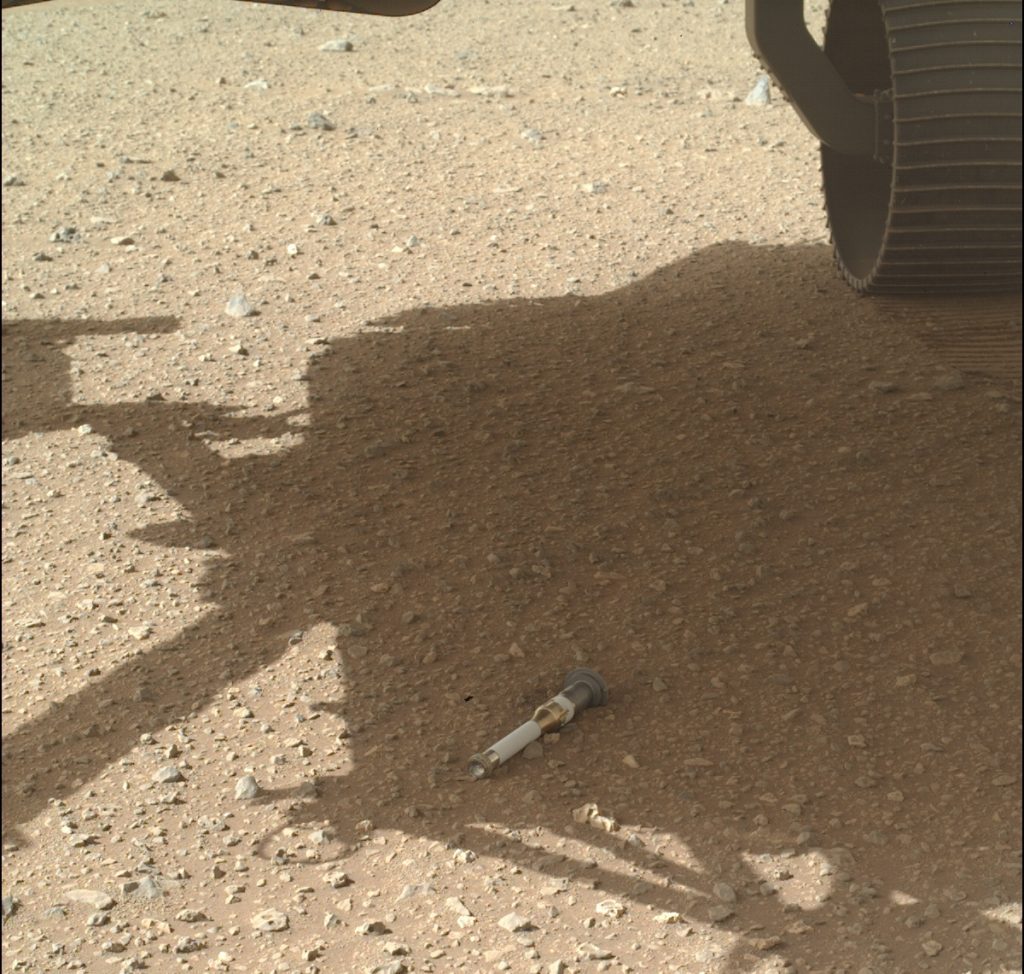Efforts by scientists to use a Mars rover to collect samples are continuing even as NASA completes a new assessment of when and how those samples will be brought back to Earth.
The Perseverance rover, which landed on Mars in February 2021, has filled 26 of its 43 sample tubes. Scientists involved with the mission revealed this information at the Lunar and Planetary Sciences Conference (LPSC) on March 12. The rover is climbing up the remains of a river delta that once flowed into Jezero Crater.
Meenakshi Wadhwa, a planetary scientist at Arizona State University and principal scientist for Mars Sample Return (MSR) at the Jet Propulsion Laboratory, stated that of the 26 tubes filled, 20 contain rock cores, two contain regolith, and one holds a sample of the atmosphere. The remaining three are “witness tubes” used as controls to identify any terrestrial contamination in the other tubes.
Two of the 17 remaining tubes are also witness tubes. This leaves 15 tubes that can be filled with other samples. Scientists are planning the next phases of the rover’s traverse, such as to the crater rim, which promises a diverse selection of rocks of different ages and exposed to different processes, “including materials of astrobiological potential.”
The work is ongoing as NASA completes a review of the overall MSR architecture, including the schedule and design of the mission that will collect those sample tubes and return them to Earth. Following an independent review board's conclusion that the agency’s existing approach could not meet cost and schedule goals, NASA appointed an MSR IRB Response Team (MIRT) in October to evaluate alternative approaches.
“A significant amount of work has already been completed” by the MIRT, said Wadhwa. The MIRT is expected to finish its work by the end of the month, with NASA releasing its revised MSR plans and proposed budget as soon as April.
This has created uncertainty not only for MSR but also for NASA’s overall planetary science portfolio. NASA's fiscal year 2025 budget proposal, released on March 11, left MSR funding as TBD, or to be determined. At the same time, the agency must also develop an operating plan for the fiscal year 2024 funding provided by an appropriations bill passed on March 8 that instructed NASA to spend at least $300 million, and as much as $949.3 million, on MSR in 2024.
The TBD in the fiscal year 2025 budget request for MSR reflects the uncertainty about the plans for carrying out the program, said Lori Glaze, director of NASA’s planetary science division, during a town hall meeting at LPSC on March 11. “We’re trying to give the response team the time they need to complete their assessment and provide the recommendation,” she explained.
Once that work is done, NASA will amend its budget request to seek specific funding for MSR in 2025, but at the expense of the allocations requested for other planetary programs in the original proposal. “I do not expect the top level of the planetary budget to go up above the $2.73 billion” in the original request, she said, which is already fully allocated to other programs. “We need to think about how we support Mars Sample Return within a balanced planetary portfolio and within that $2.73 billion top line.”
NASA is dealing with similar difficulties in figuring out how to fund the Mars Sample Return in 2024 based on the limits set by the appropriations bill. “This is going to be the heart of a very difficult process,” she said.
While not giving much detail about what the new MSR design, cost, and schedule will be, NASA officials at the conference emphasized again the scientific importance of the program.
“Mars Sample Return is one of the highest priorities in the past two decadal surveys. It is an agency priority,” said Lindsay Hays, acting lead scientist for MSR at NASA Headquarters, during a March 12 presentation. The samples, she said, can serve as a “Rosetta Stone” to decode the early history of terrestrial planets.
Those officials admitted, however, that the uncertainty about MSR was affecting science planning. That includes potential surveys beyond the crater rim by Perseverance to collect samples. “We’re awaiting to see what the MIRT results are,” Hays said. “The MIRT is going to help us understand what is our future architecture and future schedule.”
She added that “maximizing sample number and simple diversity is absolutely key” for the mission, a point Wadhwa also made.
“We are currently awaiting the outcome of the MIRT in terms of what the timeline is going to look like,” Wadhwa said, which will shape what kind of traverse Perseverance will take to collect additional samples at and beyond the crater rim. “We have an amazing set of rocks awaiting us in those regions.”









